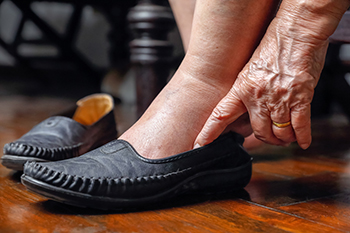Same Day or Next Day Appointments Available Laredo (956) 726-9797 Se Habla Español
Same Day or Next Day Appointments Available Laredo (956) 726-9797 Se Habla Español

Developing foot ulcers is common among people with diabetes. These can be dangerous if ignored, and in some cases lead to gangrene or even amputation of a limb. Experts believe the best way to avoid these dire complications is to manage blood sugar levels. But other factors contribute to the formation of foot or leg ulcers, which are wounds that do not heal properly. Peripheral artery disease and diabetic neuropathy both can play a role. Numbness and other symptoms brought on by these conditions increase the likelihood of small cuts, sores, and bruises going undetected. Treating ulcers early can help prevent the worst-case scenarios. Practicing healthy foot care is essential. Examine your feet, heels, and ankles daily. Keep them clean, dry, and well moisturized to avoid cracks in the skin. Maintaining healthy body weight, eating nutritious foods, and exercising daily can also help. Look for redness, swelling, discoloration, or bruising. If you notice a cut, sore, or wound that won’t heal, please consult a podiatrist as soon as possible to develop a regular schedule of examination and treatment.
Diabetic Limb Salvage
Diabetic limb salvage can be an effective way in preventing the need for limb amputation. If you have a foot ulcer and diabetes, consult with Jed Wells, DPM from Jed Wells, DPM Foot Specialist. Our doctor will assess your condition and provide you with quality foot and ankle treatment.
What Is Diabetic Limb Salvage?
Diabetic limb salvage is the attempt of saving a limb, such as the foot, that has an infected ulcer, from amputation. Podiatrists also try to make sure that there is enough function in the foot after the salvage that it is still usable. Those with diabetes experience poor blood circulation, which prevents proper healing of an ulcer. If the ulcer is left uncheck, it could become infected, which could result in the need for amputation.
Diabetes is the number one cause of non-traumatic amputations in the United States. Amputation has been found to lead to higher mortality rates. This translates into higher healthcare costs, and a reduced quality of life and mobility for amputees. Podiatrists have attempted to increase the prevalence of limb salvage in an attempt to solve these issues.
Diagnosis and Treatment
Limb salvage teams have grown in recent years that utilize a number of different treatments to save the infected limb. This includes podiatrists that specialize in wound care, rehabilitation, orthotics, and surgery. Through a combination of these methods, limb salvage has been found to be an effective treatment for infected limbs, and as an alternative to amputation. Podiatrists will first evaluate the potential for limb salvage and determine if the limb can be saved or must be amputated.
If you have any questions, please feel free to contact our offices located in Corpus Christi, and Laredo, TX . We offer the newest diagnostic and treatment technologies for all your foot care needs.







